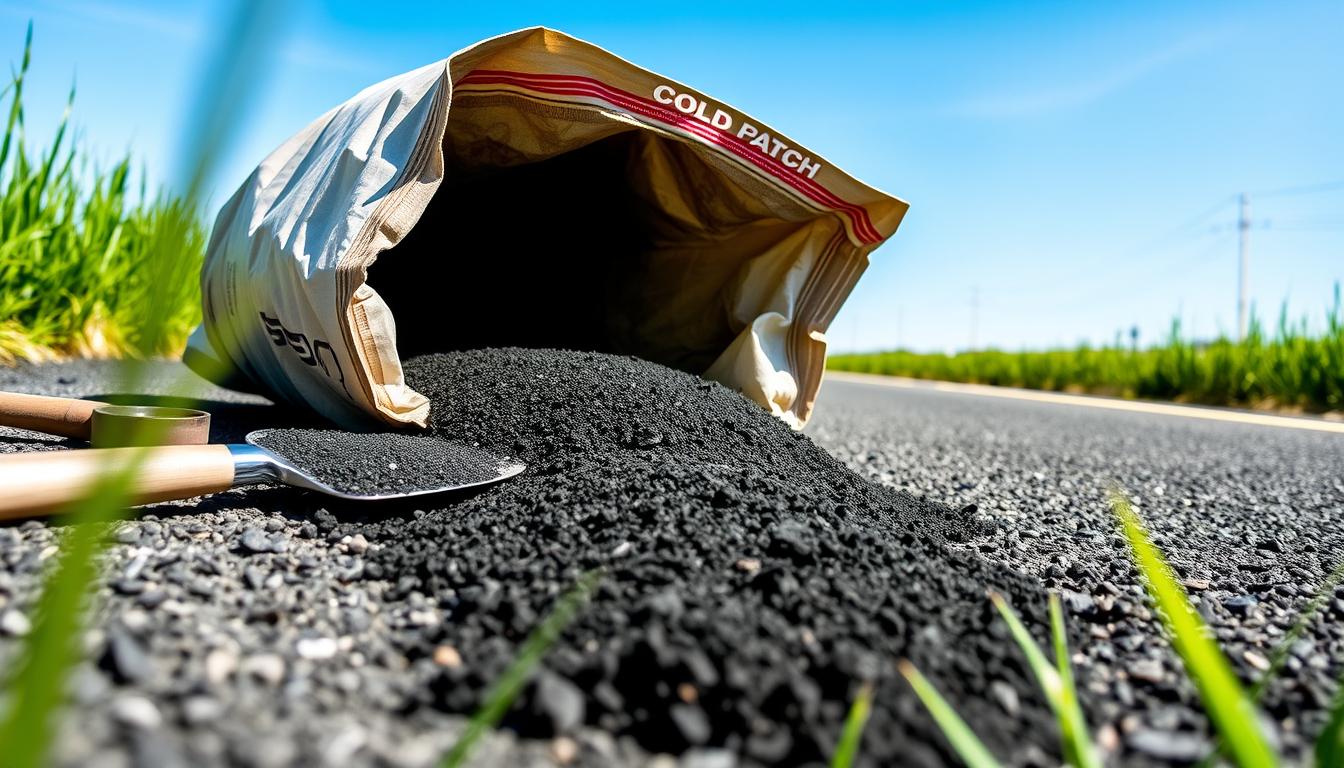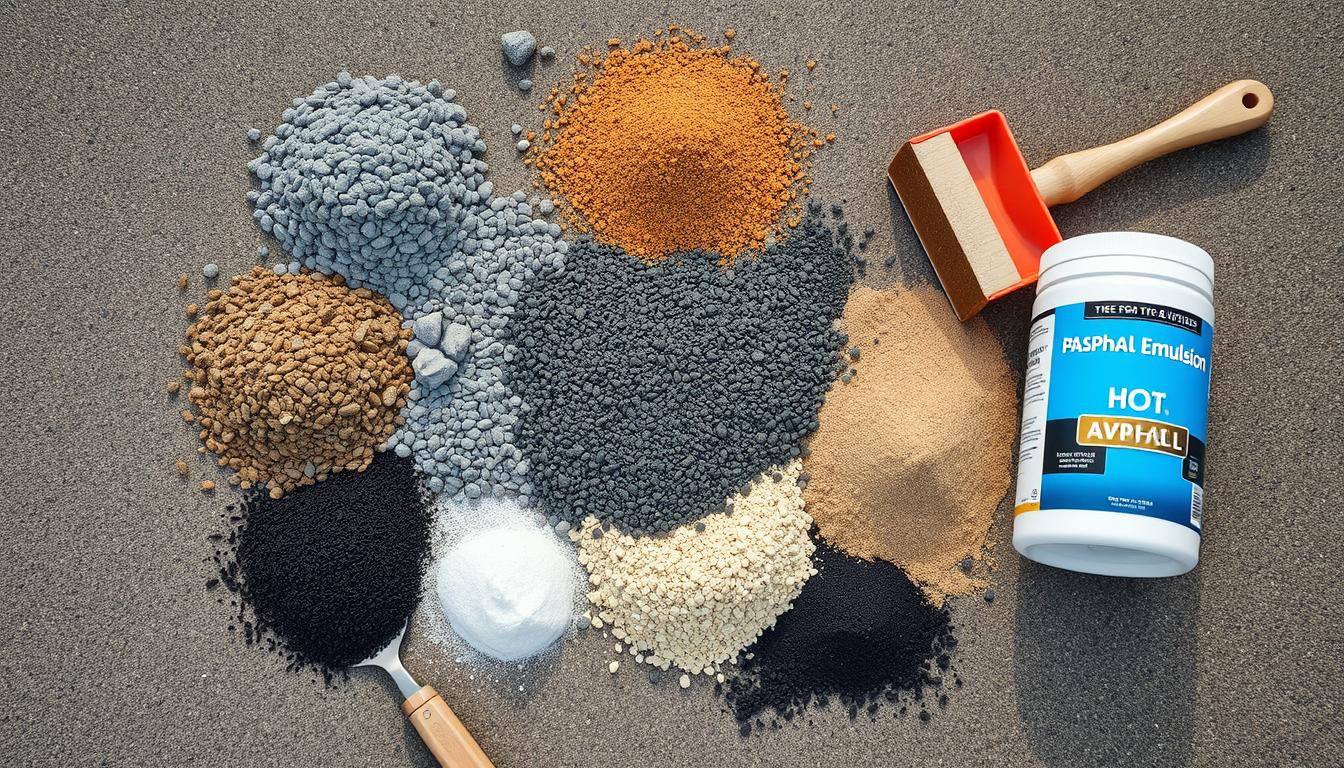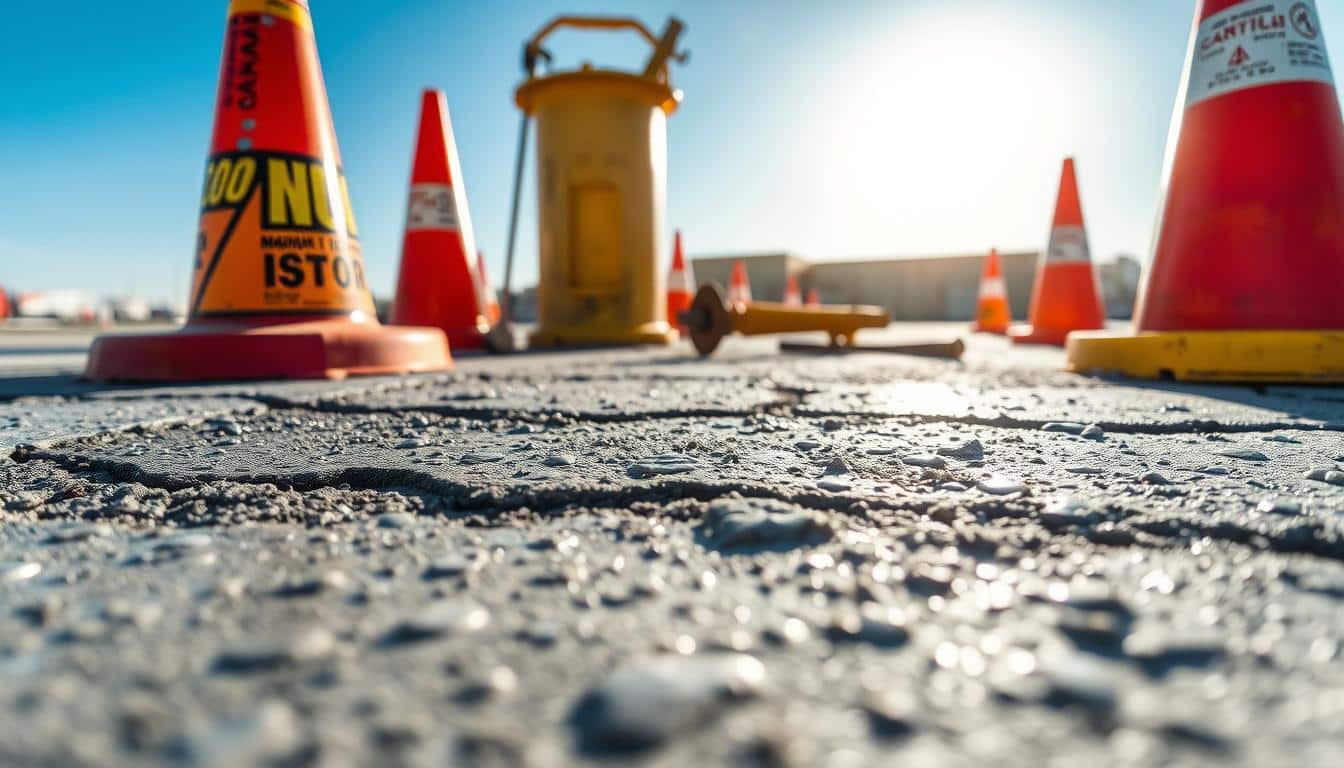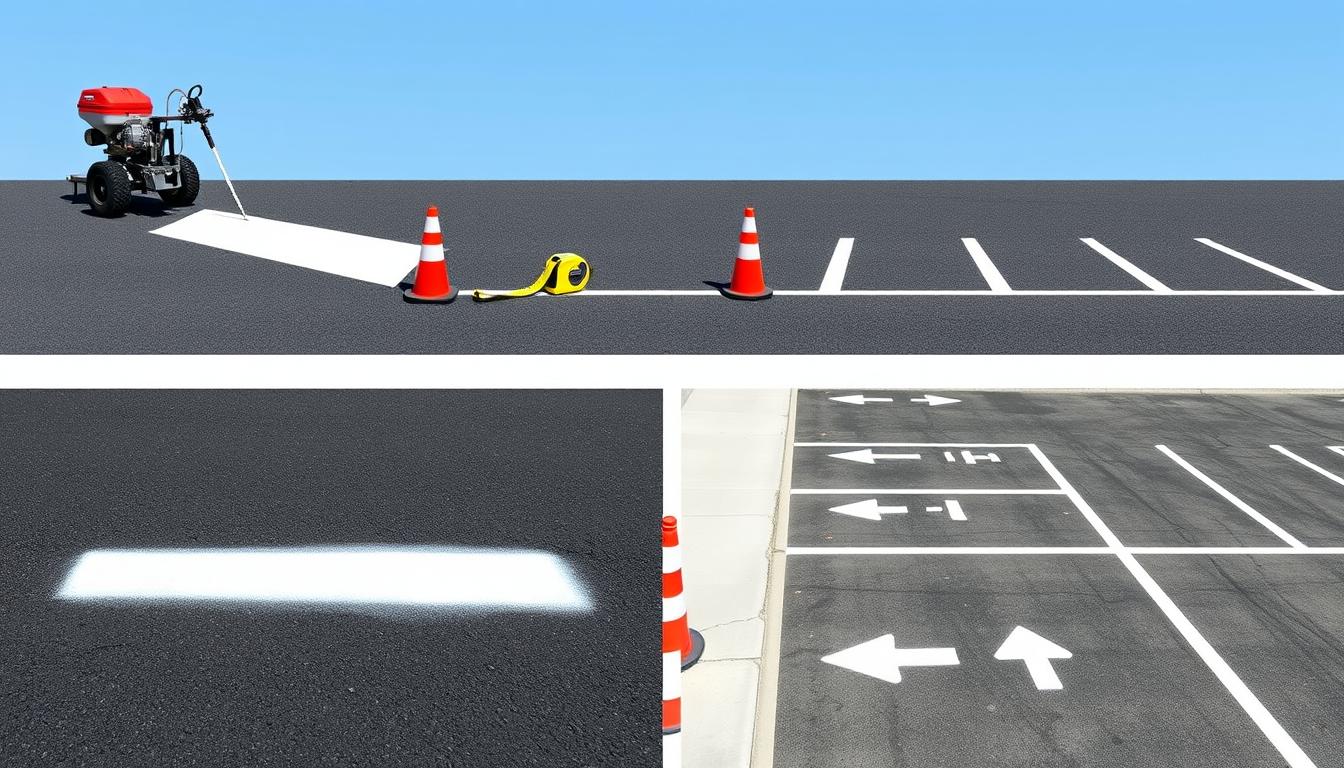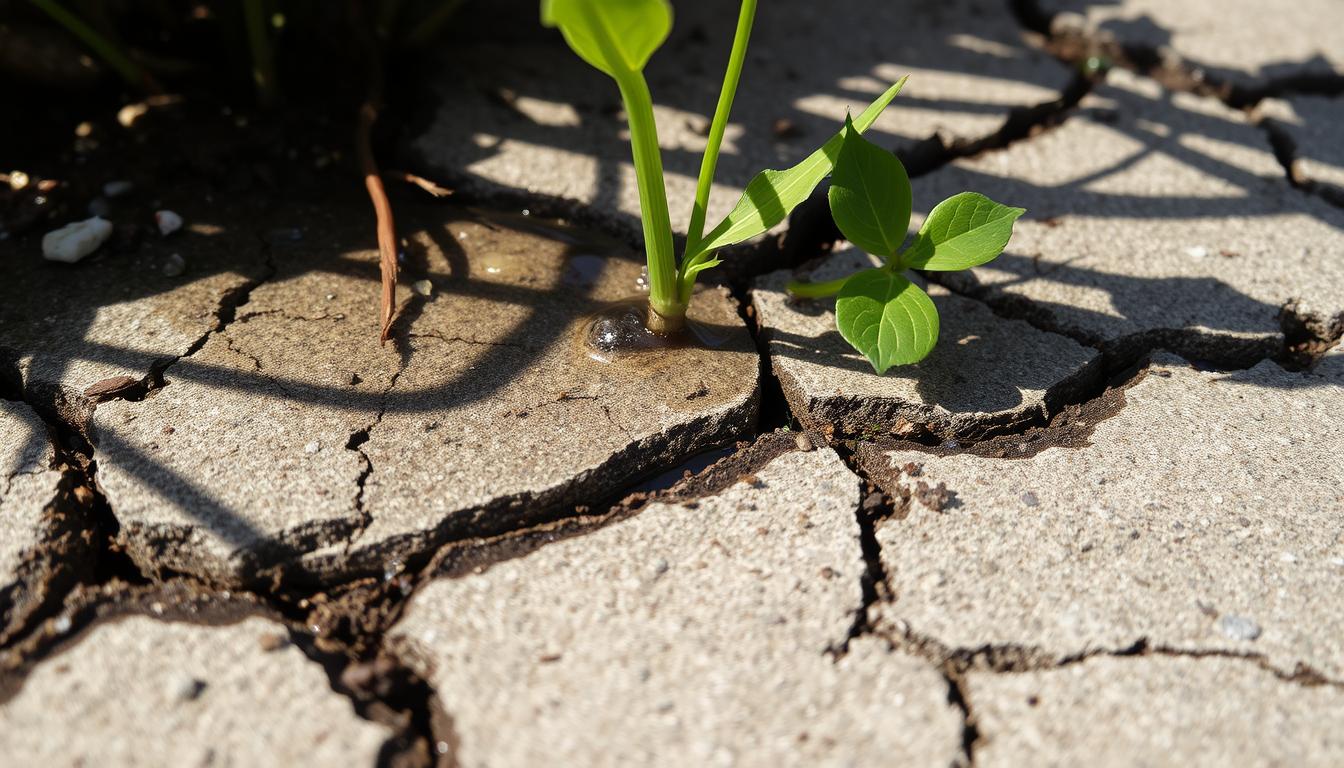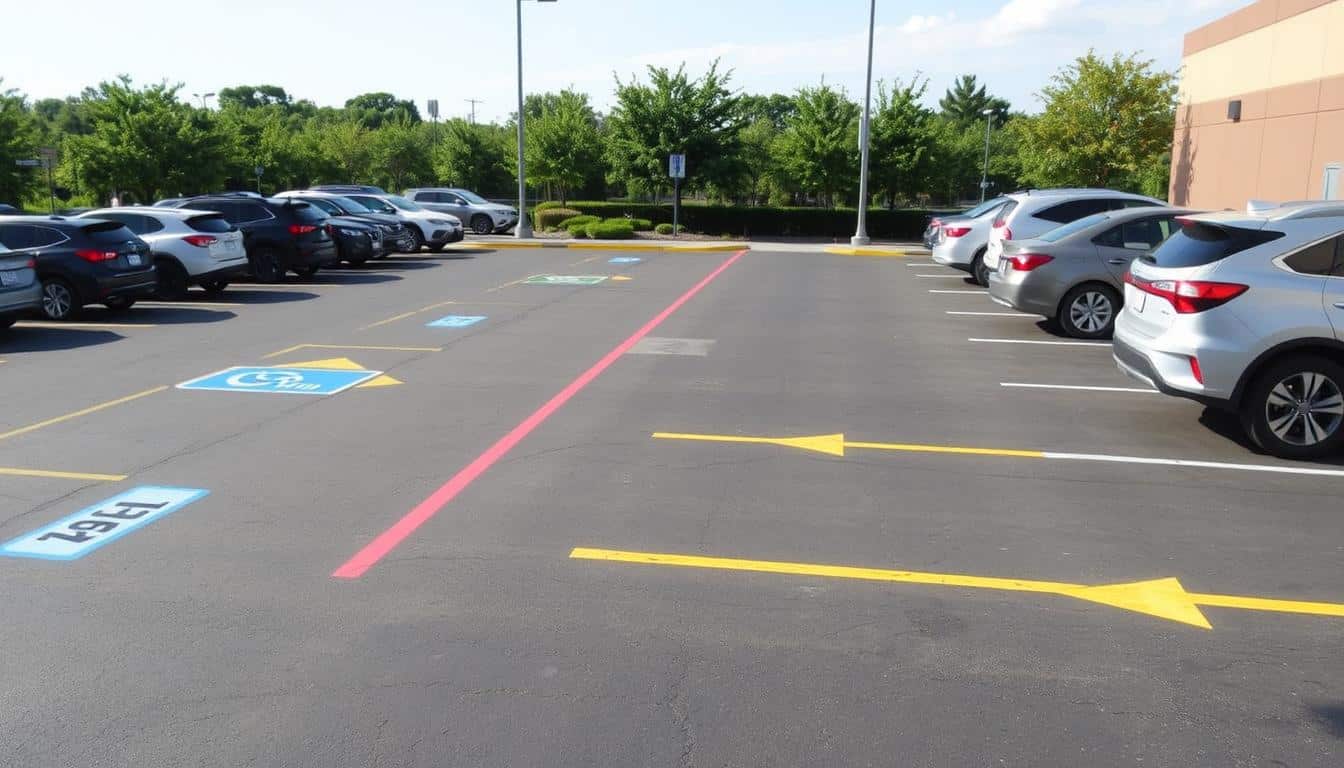Ever wondered what materials are used for pothole repair? Or why some potholes disappear fast while others linger? The choice of materials is critical. It impacts how long the fix lasts and road safety.
We’ll dive into the various materials used, from simple cold patch asphalt to advanced polymer-modified solutions. Each has its own benefits and drawbacks, influenced by traffic, weather, and budget.
Learning about these materials can save you money and improve road quality. Each option has its own strengths and weaknesses, depending on things like traffic, weather, and budget.
As we explore further, you’ll learn about the best pothole repair products. These products help make our roads smoother and last longer.
Key Takeaways
- The Throw-and-Go Pothole Repair Method is low-cost and quick.
- The Throw-and-Roll Method compacts filled potholes using maintenance trucks for better results.
- A Semi-Permanent Pothole Repair offers a robust solution by covering the full depth of the pothole.
- A combination of aggregate and asphalt cement is recognized as the sturdiest material for heavy traffic.
- Preventive measures like regular pavement surveys can drastically reduce the occurrence of potholes.
Understanding Pothole Repair
Potholes are a big problem on roads. They make driving uncomfortable and can be dangerous. Knowing what potholes are and why they happen is key to fixing them.
Definition of Potholes
A pothole is a deep hole in the road. It’s caused by weather and lots of cars driving by. The asphalt cracks, letting water in.
When water freezes and thaws, it makes the hole bigger. If not fixed, potholes can get worse.
Causes of Potholes
Potholes come from not taking care of roads, weather, and too many cars. If not fixed, potholes get bigger. Roads with cracks are more likely to get potholes.
Fixing cracks early can save the road and money. It’s important to keep roads in good shape.
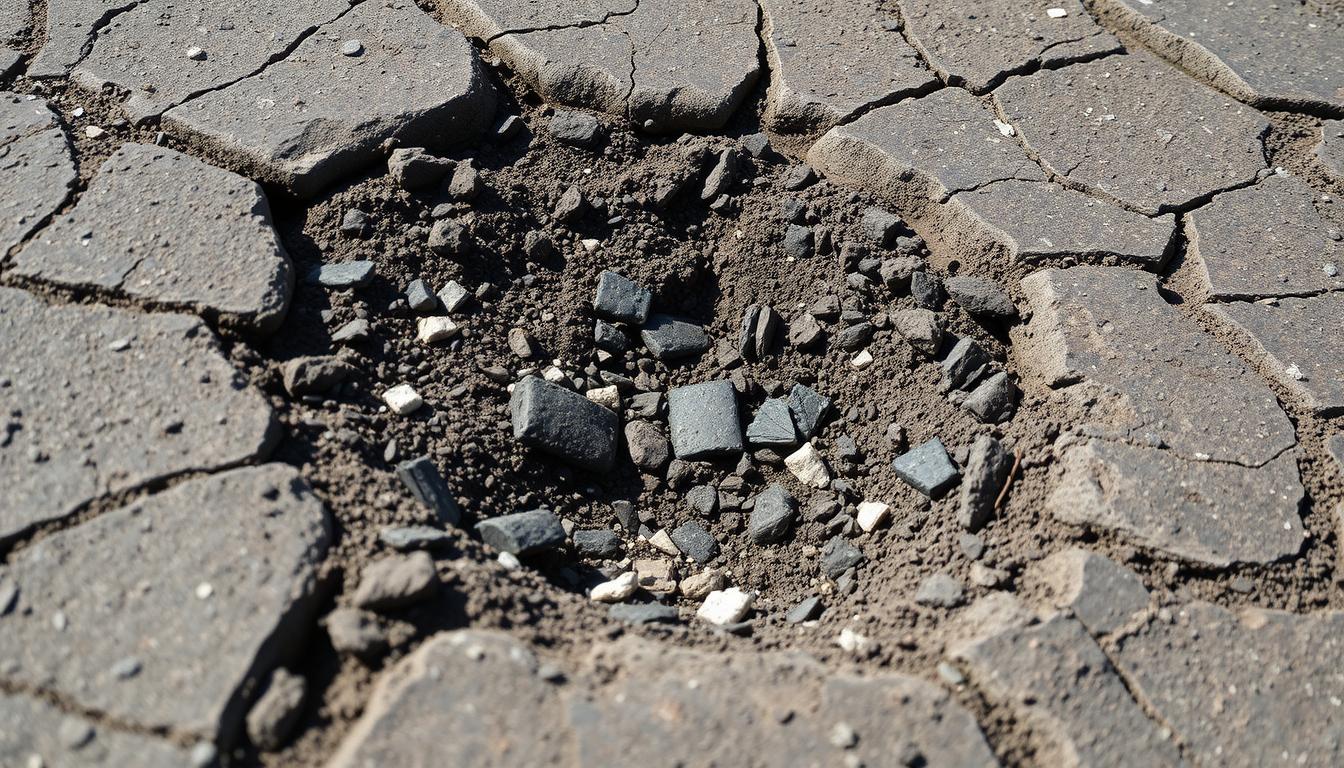
Types of Materials for Pothole Repair
Pothole repair uses several effective materials. Cold patch asphalt, hot mix asphalt, and polymer-modified asphalt are key. Each has its own benefits, making them perfect for different situations.
Cold Patch Asphalt
Cold patch asphalt is great for DIY fixes. You can find it at local hardware stores. It’s easy to use but works best as a quick fix.
It’s best in cooler weather but may not last long if not applied right. Using it requires physical effort, which can be a drawback for big repairs.
Hot Mix Asphalt
Hot mix asphalt is known for its durability and handling heavy traffic. It gives a smooth finish, perfect for busy areas. It’s fast to apply, which helps keep traffic moving.
Its performance makes it a top pick for road maintenance teams.
Polymer-Modified Asphalt
Polymer-modified asphalt boosts performance and lasts longer. It can be up to 50% better than regular asphalt mixes. It sticks well and cracks less, fitting various climates.
The Benefits of Each Material
Each material for fixing potholes has its own benefits. Knowing these can help choose the best fix and make repairs last longer.
Cold Patch Advantages
Cold patch asphalt is cheap and easy to use. It works well in any weather, allowing repairs to occur throughout the year. This makes roads safer and saves drivers time.
It’s great for quick fixes when time is short.
Hot Mix Benefits
Hot mix asphalt is very durable and smooth. It’s made from 95% stone, sand, or gravel mixed with asphalt cement. It needs to be heated to 150°C (300°F to 350°F) to work right.
It can last 15 to 20 years, saving money on repairs. It also bends with temperature changes, making it good for cold places.
Polymer-Modified Features
Polymer-modified asphalt is strong and flexible. It sticks better and lasts longer in bad weather. Polymers make it less likely to crack, making it a solid choice for tough climates.
Choosing the Right Material
When picking materials for pothole repair, it’s important to consider a few key things. The location and how much traffic it gets play a big role. High-traffic spots need strong materials that can handle lots of weight and weather.
On the other hand, areas with less traffic might do well with cheaper options. It’s smart to compare the costs of different materials to find the best value.
Factors to Consider
When choosing materials, think about the traffic, weather, and your budget. Hot Mix Asphalt is great for busy roads because it’s durable and sticks well after cooling. Cold Patch Asphalt is better for quick fixes, as it’s ready for traffic in about 30 minutes.
Knowing the specific needs of your area helps you make a better choice.
Comparing Costs
Looking at the costs of different pothole repair materials shows big differences. Cold Patch Asphalt is cheaper upfront, needing less time and effort to apply. But, concrete costs more at first but lasts longer, saving money in the long run.
By carefully looking at these costs, you can pick a solution that fits your budget now and later.
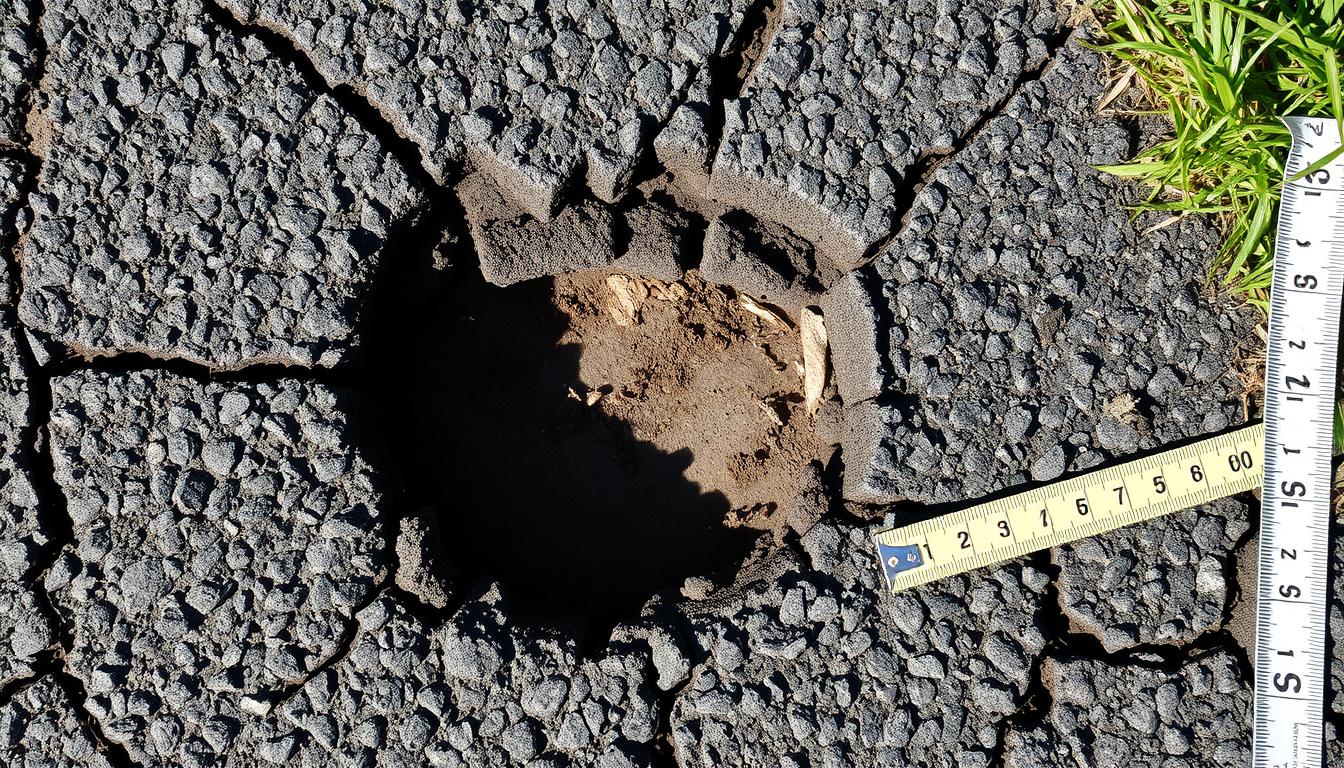
The Repair Process
The pothole repair process is vital for road safety and durability. First, the area must be cleaned. This removes dirt, oil, and plants.
Cleaning is essential for the repair materials to stick well. This ensures a strong fix.
Preparation Steps
Before fixing potholes, assess the damage. For small holes, cold patch asphalt works well. But, bigger holes might need asphalt replacement.
Checking damage helps find deeper issues. For example, alligator cracks need special fixes. Good preparation is key for a lasting repair.
Application Techniques
After preparing, apply the materials. Fill the hole a bit too much with cold patch asphalt. Then, use a compactor to make it even.
This ensures the patch is solid and can handle a lot of traffic. How long it dries depends on the weather. Paying close attention to application makes the repair stronger and safer.
Safety Measures During Repair
Keeping workers and drivers safe during repairs is key. Emergency repairs often happen in busy traffic. So, it’s important to use signs, barriers, and clear communication to move traffic safely.
Importance of Road Safety
Keeping the road safe during repairs is critical. Workers face dangers when traffic is nearby. They need to be seen, so they wear reflective clothes and use signs and cones.
These steps are essential. Between 2021 and 2022, 7,847 people were hurt by bad road surfaces.
Workplace Safety Practices
Keeping workers safe on the job is just as important. They should wear the right protective gear. This can cut down on accidents by up to 70%.
Training on how to use tools safely is also important. It helps avoid accidents. Plus, using safety steps for repairs makes the patches last longer and keeps workers safe.
Maintenance After Repair
Keeping roads in good shape after fixing potholes is key. Regular checks and smart prevention can cut down on future fixes. A good maintenance plan saves money and makes roads safer.
Routine Assessments
Checking pavement health often helps spot problems early. Inspections catch cracks and other issues before they get worse. Keeping up with maintenance can make paved areas last longer, which is vital for anyone managing roads.
Preventative Measures
Stopping potholes before they start is important. Sealing asphalt and fixing cracks quickly helps keep it in good shape. Using top-notch products like BearCat Manufacturing’s crack sealers makes the job faster and better.
Chip sealing can also extend pavement life, saving money over time. Focusing on prevention keeps roads strong and cuts down on costs.
Why Choose HT Paving and Seal Coating Services
At HT Paving and Seal Coating Services, we’re all about top-notch results and customer care. Being a family-owned business, we value integrity, professionalism, and quick responses. We aim to give our clients the best service, meeting their needs every step of the way.
Our Company Values
Integrity is key at HT Paving and Seal Coating Services. We’re a certified company that always strives for excellence. We promise clear communication and transparency, keeping our clients in the loop. Our goal is to build strong, lasting relationships through outstanding service and precise work.
Commitment to Client Satisfaction
Our main focus is making our clients happy with our paving services. We offer tailored solutions for the Bay Area and beyond. Our skilled team uses top-quality materials and the latest techniques for every project.
We’re committed to providing exceptional support. We listen to our clients’ concerns and act fast. This way, they feel heard and valued.
Contact Information
HT Paving and Seal Coating Services is here to assist with your paving needs. We cater to both homes and businesses in the Bay Area and nearby. Our team specializes in extending the life of asphalt, concrete, and pavements.
We concentrate on pothole repairs because small cracks can quickly become major issues. Fixing them early can save you money and ensure safer roads.
Serving the Bay Area and Surrounding Areas
We’re honored to serve the Bay Area’s paving needs. Our asphalt repair is fast and reliable. This means less trouble for you and better roads for all.
For more information on our services, visit our paving services page. Discover how we can assist you.
Get in Touch with Us
Ready to discuss your paving needs? Call HT Paving at (415) 774-6424. We’re excited to help maintain your roads’ safety and condition. Whether it’s an urgent repair or regular maintenance, we’re here for you.
